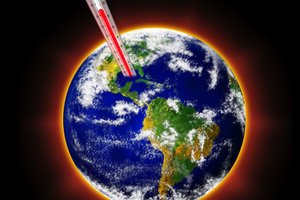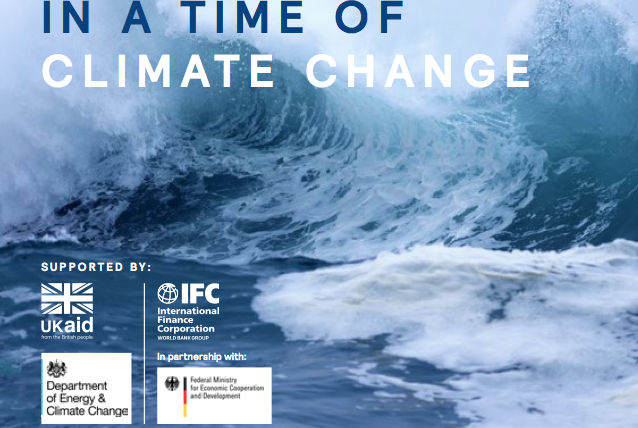I’ve had a few people get in touch to see if I am OK since I hadn’t sent anything since December. Well, I’m fine but just took some time off from blogging. But in that time I’ve been stockpiling material.
I’d like to start out the year reminding you about what is happening to our Earth, just in case you think that the problems of a warming planet aren’t going to affect us or is some time way into the future. The climate is changing and causing real, significant impacts. There’s no stopping what is already happening and certain to get worst.
Nevertheless, we have it in our own hands to “bend the arc of history” more in our favor if we act decisively and quickly. Obviously, we can’t leave it up to Washington to help right now so it’s up to us all to act locally. More on that in the future. For now, here’s some startling news.
Here are the titles of four articles quoted afterward. Scroll down to read the whole piece. Scary stuff…
OCEAN ACIDIFICATION
Coral reefs are literally dissolving in the water
Coral reefs aren’t just bleaching — they’re literally dissolving away because of climate change.
Are ‘Category 6’ hurricanes coming?
Scientists are wondering whether the increasing intensity, strength and duration of tropical cyclones merit creating a new classification: Category 6 storms.
EXTREME WEATHER
Arctic conditions grip Europe as the North Pole simmers
Snow fell in Rome for the first time in six years as a cold snap gripped Europe last week. Meanwhile, the North Pole rose above freezing — with temperatures hitting 78 degrees warmer than in parts of Norway.
North Pole temps are surging. ‘How weird is that?’
The Arctic is stewing in unusually warm weather, with some places registering more than 45 degrees Celsius above normal.
OCEAN ACIDIFICATION
Coral reefs are literally dissolving in the water
Coral reefs aren’t just bleaching — they’re literally dissolving away because of climate change. And before the end of the century, most reefs around the world may be dissolving faster than they can build themselves back up, according to new research.
It’s an often overlooked — but potentially serious — consequence of ocean acidification, says a new study published yesterday in the journal Science. Ocean acidification occurs when carbon dioxide dissolves out of the atmosphere and into the ocean, where it chemically reacts and lowers the water’s pH. The process is sometimes dubbed the “evil twin” of climate change because of the harmful effects it may have on marine ecosystems.
One widely discussed concern is that acidification may make it harder for certain marine organisms — including coral, as well as shellfish and certain types of plankton — to build the hard outer shells they need to survive. That’s because the process tends to deplete a certain type of chemical compound in the water called calcium carbonate, which is a major building block these animals use to make their shells.
Scientists are now realizing that acidification not only hinders corals from building themselves up — it can also help tear them down. As calcium carbonate levels drop, existing coral structures start to dissolve away into the water. These include the living corals’ skeletons, but also the sediment platforms they build on top of, which form the bulk of the reefs.
“There’s very little research that’s being done on basically carbonate sediment dissolution,” said lead study author Bradley Eyre, a researcher at Southern Cross University in Australia. Most research on the effects of ocean acidification so far has focused on its impact on calcification, or the building process.
To investigate the possible dissolving effect, the researchers monitored 57 locations at five coral reefs around the world, including sites near Hawaii, Bermuda, Australia and the Cook Islands. They found a strong correlation between the dissolving process and calcium carbonate levels in the water. In fact, the dissolving process seems to be even more sensitive to ocean acidification than the building process — the effect on dissolving is up to 10 times stronger.
This may be the study’s most important finding, according to coral expert Chris Langdon of the University of Miami.
“We’ve been making projections on when reefs would get in trouble based on the sensitivity of calcification,” he told E&E News. “So we might be drastically underestimating the seriousness of the problem, given that dissolution is 10 times more sensitive.”
The researchers also discovered that there tends to be a kind of tipping point, or a specific low point in local calcium carbonate levels, beyond which coral reefs start dissolving faster than they can build. The study site in Hawaii has already hit this point, they noted.
Using this information, the researchers created a model to predict future changes in calcium carbonate levels and global reef responses. For now, conditions in the tropical oceans still generally favor more building than dissolving. But at current rates of acidification, average water conditions are expected to reach the tipping point by 2080 or so, at which point reefs will start to dissolve faster than they can build themselves up.
That’s just looking at average water chemistry throughout the world’s tropical waters, the researchers are careful to note. While the oceans are generally acidifying all over the world, water chemistry can differ widely from one location to the next, influenced by pollution, organic matter in the water and other regional factors.
This means not every reef will necessarily hit its tipping point at the exact same time. Still, the research suggests that many of them are on track to meet such a fate within this century.
And the corals around Hawaii may not be the only ones already at that point. A 2016 study, co-authored by Langdon, found that parts of the Florida Reef Tract — the third-largest barrier reef ecosystem in the world — are eroding away, particularly during the fall and winter months. And more recent monitoring efforts suggest the process is still occurring and may even be affecting more of the reef than before, Langdon said.
How severely this dissolving process will affect the reefs — both in Florida and around the world — remains in question, Eyre said. Because scientists are just starting to document the process, it’s unclear how rapidly reefs may erode once the process starts. But it’s likely that other ongoing impacts of climate change, such as coral bleaching, may weaken reefs even further in the future and make them more vulnerable to the dissolving process.
In light of such uncertainty, Eyre said, the best course of action is to continue working to slow ocean acidification, and climate change generally, before its effects grow too much worse.
“I think the take-home message … is that we really need to reduce the amount of CO2 that we’re putting into the atmosphere,” he said.
North Pole temps are surging. ‘How weird is that?’
It’s not just the East Coast — even the Arctic is stewing in unusually warm weather, with some places registering more than 45 degrees Celsius above normal.
The northernmost weather station in the world, Cape Morris Jesup at the northern tip of Greenland, recorded more than 24 hours above freezing earlier this week.
“How weird is that?” tweeted Robert Rohde, a physicist at the University of California, Berkeley. “Well it’s Arctic winter. The sun set in October and won’t be seen again until March. Perpetual night, but still above freezing.”
Sea ice off the Alaska coast is reaching record lows, with almost one-third of the area’s ice vanishing in just over a week.
The coming days could bring more extreme weather: The North Pole’s temperatures could rise well above freezing by Sunday (Jason Samenow, Washington Post, Feb. 21). — AAA



